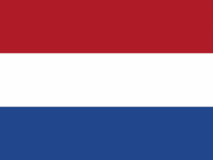Free shipping from €50 - Protective packaging against damage - Ordered today, delivered fast - Return within 30 days
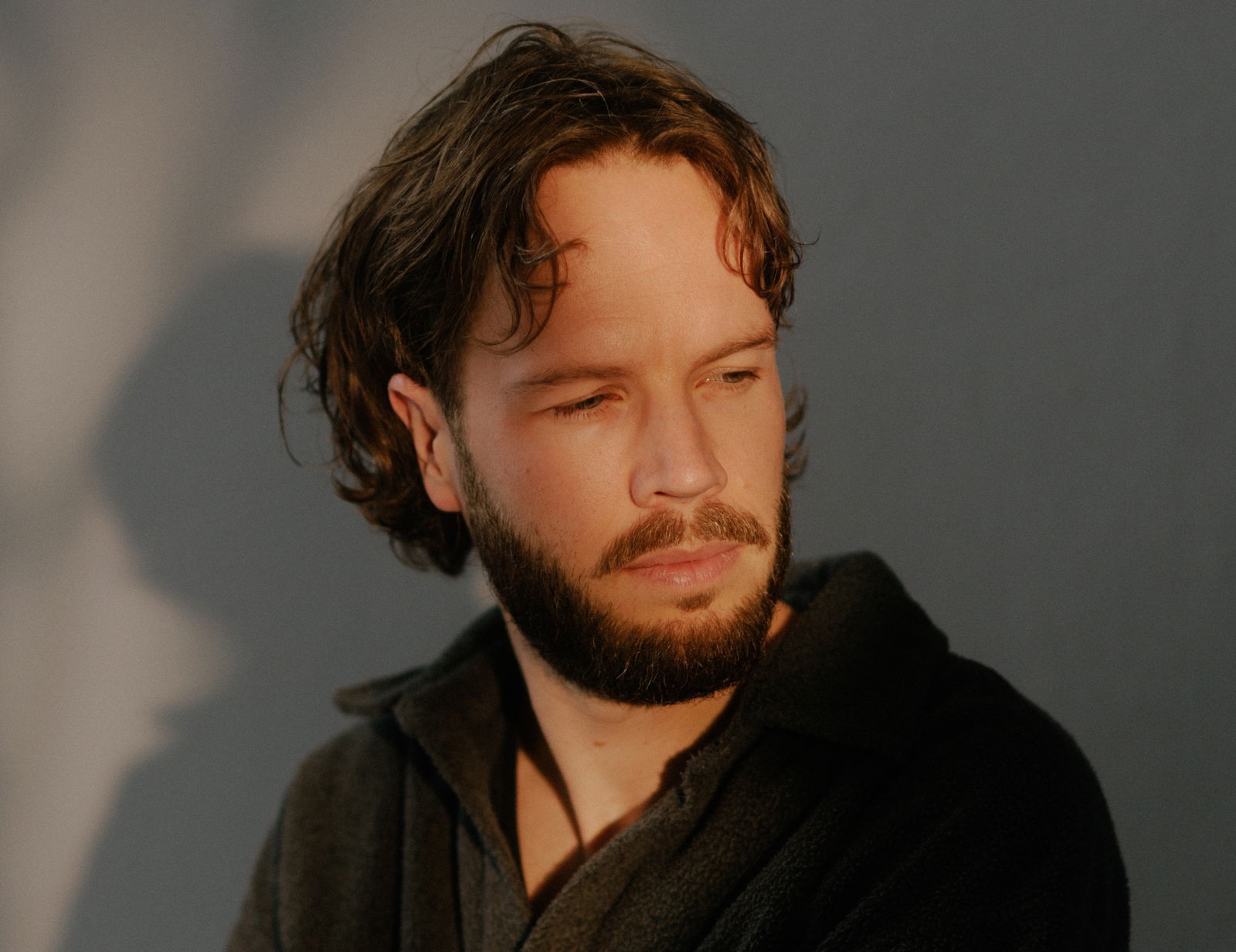
Amsterdam through the lens of photographer Gosse Bouma
In the coffee table book "A New Light on Amsterdam," Gosse Bouma shares his unique view of Amsterdam. Working exclusively with natural light, the award-winning photographer paints a unique and powerful portrait of the city he loves so much.
In his first photo book Bouma takes a visual journey through the capital of the Netherlands, creating serene cityscapes with a hint of melancholy - from the cobblestone bridges and diverse facades to the quaint wharves and narrow alleys. His work reflects a deep reverence for the city's past and present, a dialogue between glow and gloom, history and modernity - a city in a new light.

Looking at late medieval maps of Amsterdam, it is almost like looking at an open shell washed up on the shore, with the Amstel River flowing through it. The city's few streets spread out like the ribs of the shell, embracing the water flowing through the heart of the city. Low wooden houses, modest in their design, are connected by small bridges. It is a bird's eye view of a city not yet marked by the imposing canal houses that would later adorn the concentric rings around the city. Today that area is known as the Grachtengordel and attracts millions of visitors annually. In sharp contrast to the modern cityscape, these maps offer a glimpse of the city's humble origins.
"One early morning I stumbled upon a city shrouded in a thick fog with my camera. There was a peace, an intimacy almost - that you hardly ever encounter in a busy center like Amsterdam."
Amsterdam, which emerged not from fertile fields but from the swampy wetlands of the Amstel River, has an unusual and remarkable foundation. In the 12th century, determined settlers responded to the constant threat of flooding by erecting complex networks of dams and dikes, creating a delicate balance between land and water. Here, where cultivation was a distant dream, they drove wooden stakes deep into the unstable soil to create a firm foundation for future grandeur. Through centuries of perseverance, these early efforts were transformed into the vibrant city that is Amsterdam today. It is as if a cloak of antiquity has been thrown over the present, inviting romantic contemplation of the past amid today's hustle and bustle.
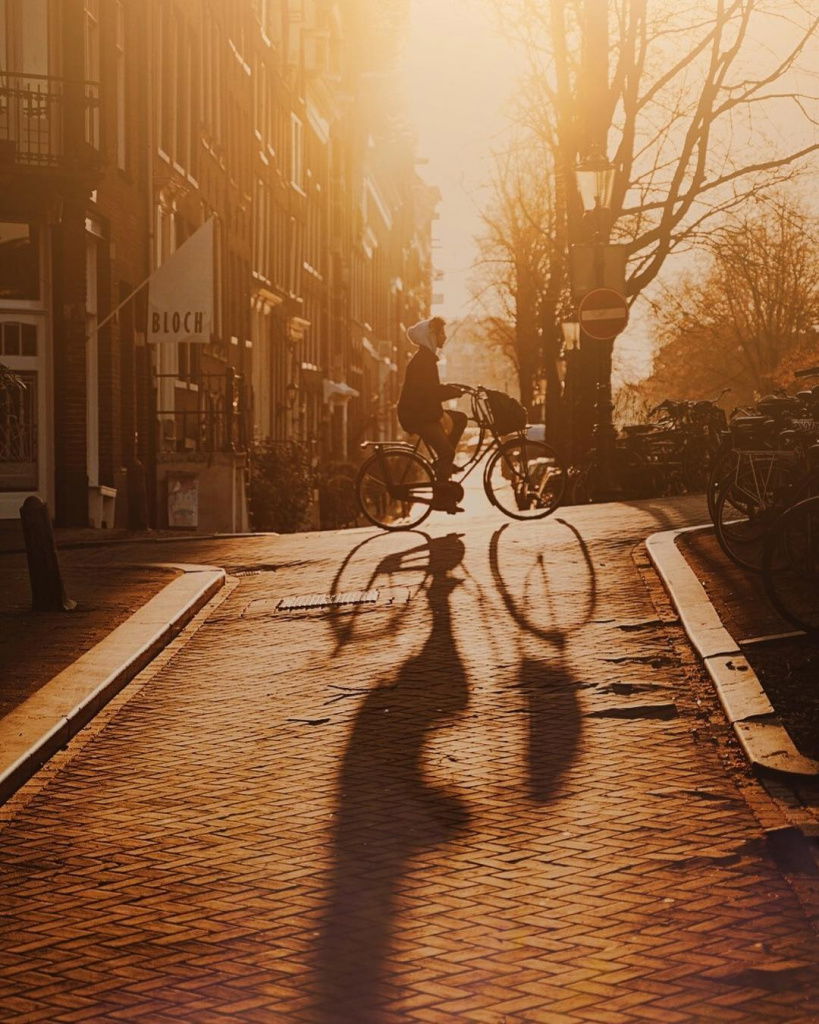
Several centuries later, this inner core of the city, along with the surrounding canals, has become the hunting ground of self-taught photographer Gosse Bouma. Some five years ago, in an almost feverish attempt to capture the beauty of the city, he decided to get up before dawn and go exploring in silence. Soon a strict ritual developed: after getting up, he biked around, looking for something he was not yet sure about. Similarly, he headed into the city just before dusk to capture the transition from the "golden hour" - when everything is bathed in rich, saturated light - to the "blue hour": the moment just after sunset when the soft, diffuse light lends a dreamlike quality to urban landscapes. After repeating this not just once or twice, but some 40 times, he stumbled upon a scene that would form the basis of his future photography endeavors.
"Some people see a certain gloom in my work, but I see it differently. As a photographer, I find comfort in capturing scenes at sunrise and sunset. There is a gentle reassurance in repetitive moments, showing that life is cyclical and there is always a new dawn."
"It was one of those early mornings when I was cycling through the city again, looking for those rare moments to capture - without knowing exactly what I was looking for. I had repeated that exact sequence when suddenly I found the city shrouded in a fog so thick that it obscured the outer lines of my vision," Bouma explains. "There was a quietness, an almost intimate atmosphere, that one rarely encounters in a busy - sometimes overrun - city center like this." It was February 2020, a few weeks before the pandemic would take hold of the world. It was as if the city was already holding its breath for what was to come. "And in this total silence I was overcome by a pervasive sense of melancholy, and all the noise seemed gone. It was as if I had entered a vacuum, without place or time - that sweet moment just before 8 a.m. when the city awakens - and I could enjoy the rare privilege of being alone somewhere."

Any resident or acquaintance of Amsterdam knows well how the constant stream of stimuli can obscure the city's distinctive features: from its cobblestone-paved bridges and diverse facades, to its picturesque wharves and narrow alleys. "Moments like that morning are fleeting. When the city awakens, the sense of magic dissolves. That's usually the moment I leave." Inspired by what he had seen, Bouma began to pursue those same conditions he had experienced in the early hours, keeping a close eye on the weather. This eventually led to the creation of a new body of work: a city shrouded in dense fog, captured in a serene and enchantingly beautiful light. Bouma adds, "I consider myself more of a nature photographer than a city or street photographer. Those beautiful rays of light breaking through the fog are reminiscent of scenes in beech forests or moors, and they can also be found in cities. These sun rays - or "sun strings," as we call them in the Netherlands - are one of my favorite natural elements to work with. You just have to know how to capture them."
"I enjoy that rare privilege of being somewhere alone and finding those magical moments of beauty to capture. It changes your relationship to a city."
In his own words, this requires perseverance. A city shrouded in perfect light or fog does not just present itself out of nowhere. It takes time and dedication - both sunrise and sunset. Also a certain restlessness. "Some people see a certain gloom in my work, but I see it differently. As a photographer, I find comfort in capturing scenes at sunrise and sunset. There is a gentle reassurance in these repetitive moments, showing that life is cyclical and there is always another dawn coming. This daily rhythm reassures me because it reminds me that although the scenes I capture are ephemeral, the city is always renewing itself, throwing familiar sights into a fresh, glowing light."
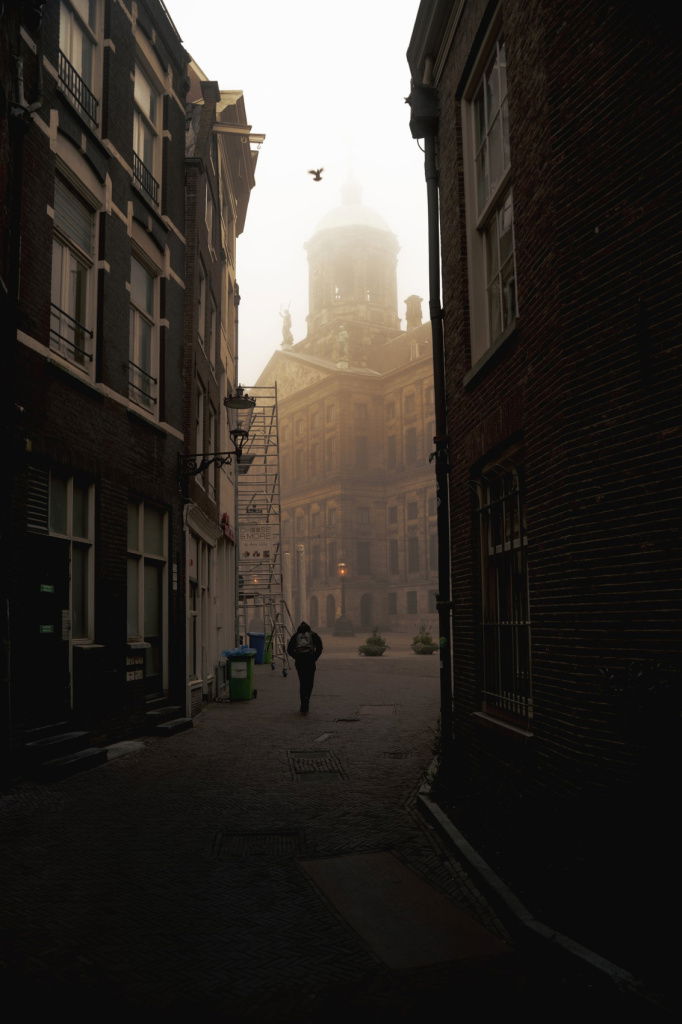
In each photograph, Bouma skillfully balances different elements - some carefully staged, others captured spontaneously. He interweaves light and shadow, a lone figure caught by chance, the wonders of 18th-century Amsterdam architecture, geese flying in perfect V-formation, the sun shining in the reflection of a window, the geometric lines of streetcar rails. Each frame embodies the intricate dance of these components and reflects a nostalgic soul behind the lens. "There is no doubt that as I wander through downtown, I am captivated by the layers of past lives upon which this city is built," he explains. However, it is not only in grand settings or along foggy wharves that his thoughts about his fellow residents arise. "That same fascination grips me when I see someone lost in thought, or leaning against a bus stop. What stories lie behind them?" he wonders.
“Those beautiful rays of light poking through fog, reminiscent of scenes in beech forests or heathlands, are also present in cities, if you know how to capture them. These 'sun harps,' as we call them in the Netherlands, are one of my favorite natural elements to work with."
The human presence is felt even in the silence of an abandoned bus stop or subway station. The photographer's lens captures these everyday scenes: the worn bench, the dimly lit platform. Though now empty, these spaces subtly bear the imprint of those who have passed through them. His photographs reveal invisible traces of humanity, making these seemingly mundane places resonate with the echoes of countless moments. "I once captured this moment, coming out of the subway, of a steady stream of commuters pouring out of the same entrance, each with eyes tightly forward, as if pulled by an invisible magnet toward a common destination. I was fascinated by the unity of movement and shared direction amid the diversity of stories that passed before me."
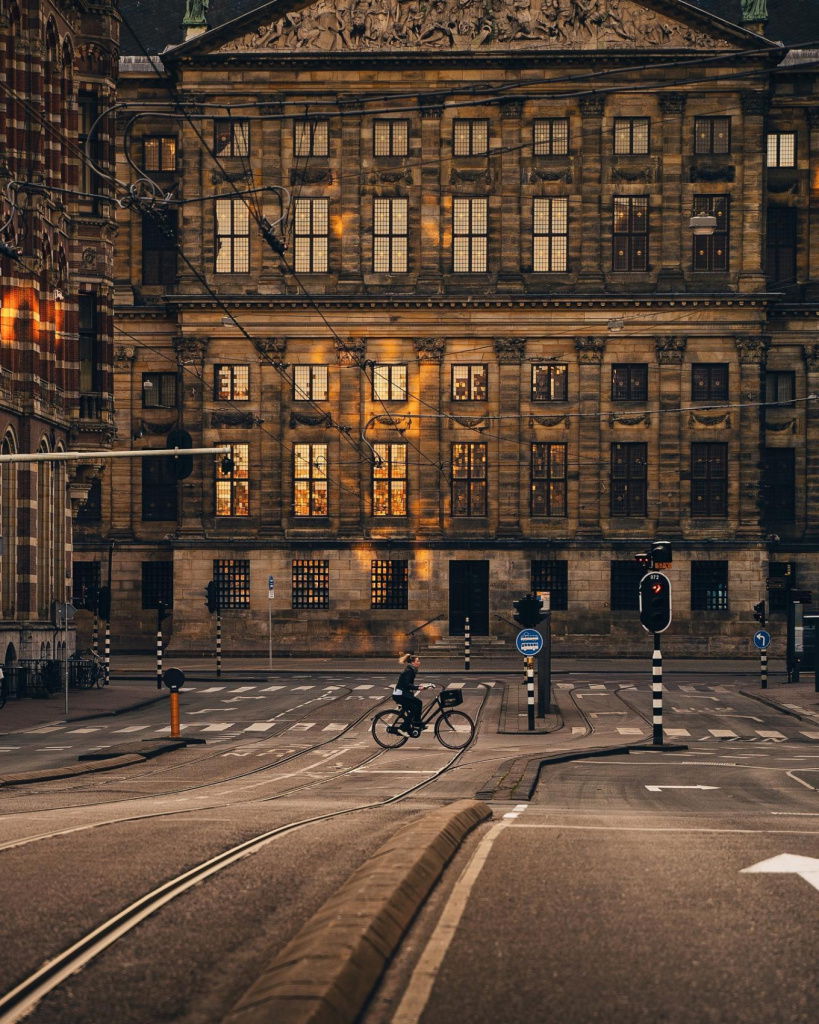
Over time, he noticed that certain patterns and motifs began to appear naturally in his work. Flashing neon lights in underground subways, the timeless elegance of a well-dressed elderly gentleman, or a certain shade of green that caught his attention - these elements almost unconsciously wove themselves into his photographs. As his body of work continues to develop and expand, it is intriguing to see how these recurring themes gradually form a distinctive signature.
"Recognition gives me great pleasure, especially because sometimes I was afraid that my style would be seen as a gimmick or that I felt like an impostor, since I am self-taught."
Bouma's keen eye did not go unnoticed. When he began sharing his work on various platforms, a dedicated community of enthusiasts quickly embraced his unique perspective, earning him the status of a modern urban chronicler. "It is such a joy to have found my voice through my work. Nowadays, when Amsterdam is shrouded in fog, people share their photos and call it a 'Gosse Bouma morning.' This recognition brings me great joy, especially because there were times when I worried that my style would be seen as a gimmick or when I felt like an impostor because I am self-taught. My only goal is for people to enjoy the beauty of this city through my lens. It is a tremendous honor to be mentioned in the same breath as pioneers like Jacob Olie. Yet I see myself more as a conduit, a prism reflecting the charm of the city, than as an artist in the traditional sense of the word."
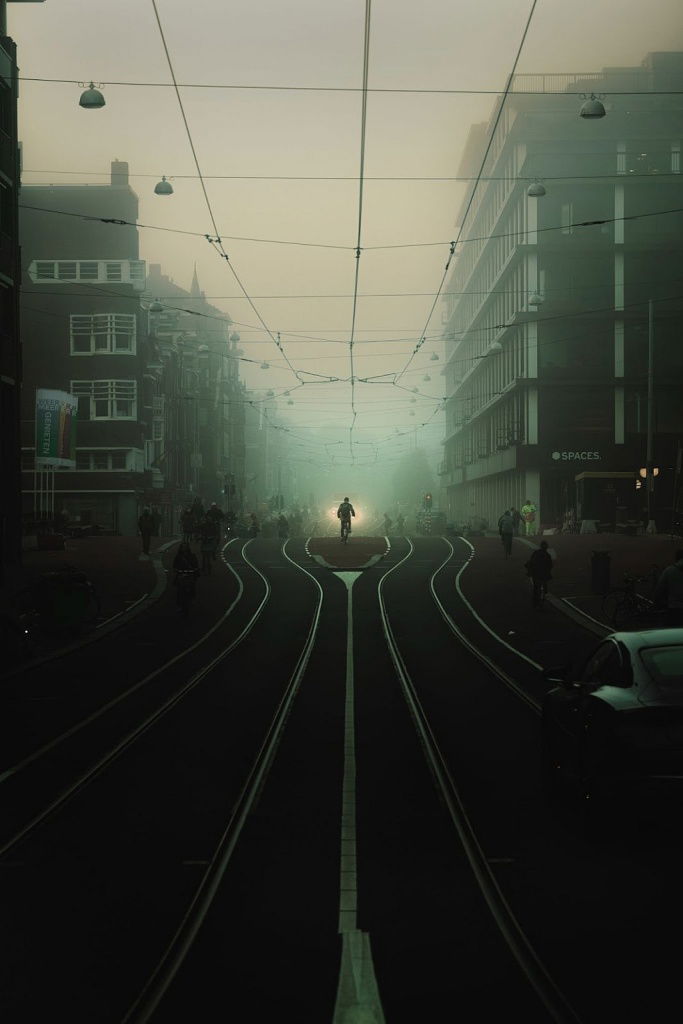
His words echo those of one of the greatest street photographers of all time: Saul Leiter, a 1950s artist known for his abstract, painterly images of New York's streets, architecture and inhabitants. He once famously said that he had no philosophy in his work: "I have a camera. I look into the camera and I take pictures. My photographs are the smallest part of my work. My photographs are the smallest part of what I see that could be photographed. They are fragments of endless possibilities." For Bouma, this philosophy resonates deeply. Like Leiter, he captures only fragments of the city, but within each fragment lies a world of infinite stories and beauty. His ability to distill the essence of Amsterdam into compelling images invites viewers to see the familiar in new and profound ways. Bouma's work reflects a deep reverence for the city's past and present, a dialogue between glow and gloom, history and modernity - a city in a new light. TXT: Rolien Zonneveld
koffietafelboeken.nl is a purveyor of Amsterdam books featuring city photography, art, history, restaurants, local makers and Amsterdam topics.
